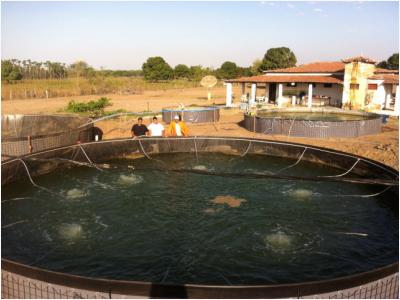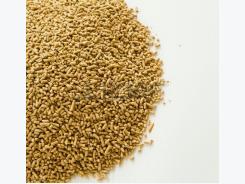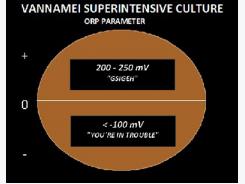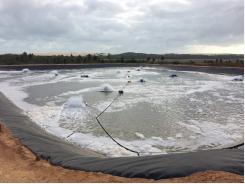Vannamei Superintensive Culture: Aeration

In superintensive vannamei culturing, aeration setup is not only for oxygen input. Aeration setup means how difficult would be your culture if you make a mistake in the water current and sludge spots. I´ll try to simplify everything and possibly we can distinguish two kinds of environments: outdoor and indoor setups or even better, with wind presence and no wind influence. For indoor aeration setup just need to worry about water current behavior to prevent sludge sedimentation.
Yes, WIND is the most important thing to consider during aeration setup even inside of a greenhouse.
Greenhouse must to be open sometime to ventilate and prevent dangerous water temperature increment. Then, wind still have a great influence in aeration setup. Check those schematics below based in real results. You cannot say "real" if you don´t dive every day in your ponds to check this out! The small gray circles represent air diffusers and the gray set is the paddle-wheel sign.

In my calculation it was 400hp/ha counting mix aeration capacity in this 220m3 tank, but wind was the greatest sludge carrier factor. To maintain ORP values we clean the bottom by siphon swimming pool every week, but I couldn´t finish the third trial because we transfer to growout pond. Was the really first time that I´ve saw a wind interference and how the paddle-wheels can sediment water suspended solids even with a huge aeration capacity - densities from 1,400 to 3,500pcs/m2 in freshwater.


In lined outdoor ponds the wind influence is worst. This was an average of various 8,000m3 growout ponds crops in high salinity culture (60ppt). Even with 60hp/ha of aeration in 2.0m depth our ORP readings went down and sludge formation was increasing due the wind force. In this case, all units running at the same direction making a great vortex, the air current against the paddle-wheel current promote scattered sludge areas. The second trial in four growout ponds I reverse the internal paddle-wheel set trying to suspend more solids allowing me discharge by central drainage. It works and ORP came up, but not enough for shrimp growth and continuing a lot of sedimentation below the paddle-wheels. “Well, I think to myself, if paddle-wheels can sediment suspend solids I´ll set up some of them above the central drain - allowing me to discharge more sludge during the purge”. People looked at me and think I was crazy loosing aeration capacity or mixing the sludge, increasing TSS. Well, that was the third trial and we saw a significant sludge reduction in the bottom - ORP comes up to +220mV, shrimp starts to growth and nobody asked me again what those paddle-wheels are doing in the central drainage.



Using the paddle-wheel current and air diffusers in 500m3 tanks greenhoused was the final trial to finish my questions against wind influence and sedimentation. Improving the sludge sedimentation above the drainage pipes confirmed with ORP readings. Note that in the first trial the Coriolis effect must be considered for an effective setup.

Maybe you´re thinking that is not a great issue, but for whom is managing a shrimp farm and is trying to growth shrimps 24/7, I think those information can help.
Understanding your wind behavior can improve your aeration setup and water management for better results and disease prevention. But the most important thing is to check and dive in the growout, confirming that your management is properly with the theory (or none theory!). We are in a new shrimp era, where most of our previous knowledge should be reviewed to support unimaginable culturing densities (thousand of shrimps per square meter).
I have to thank you all people reading and sharing my articles.The practical point of view from vannamei farming is reaching so many producers around the world and I´m very happy. It´s not only scientific, commercial or just financial point of view. There is a "hands on" and "let´s check what somebody is saying" feeling that all entrepreneur inside the production has it and must to share it. That is the real deal, prove if something it works or how you can get the maximum from each system or product.I hope this information can help you to improve your results and please, your comments are very important for everybody. Best regards from Brazil,
Related news
Tools

Phối trộn thức ăn chăn nuôi

Pha dung dịch thủy canh

Định mức cho tôm ăn

Phối trộn phân bón NPK

Xác định tỷ lệ tôm sống

Chuyển đổi đơn vị phân bón

Xác định công suất sục khí

Chuyển đổi đơn vị tôm

Tính diện tích nhà kính

Tính thể tích ao









 How to Control Microsporidian Parasites…
How to Control Microsporidian Parasites…  Why aquaculture needs zooplankton -…
Why aquaculture needs zooplankton -…